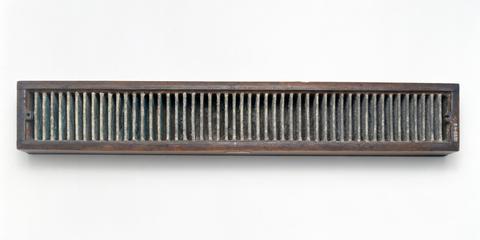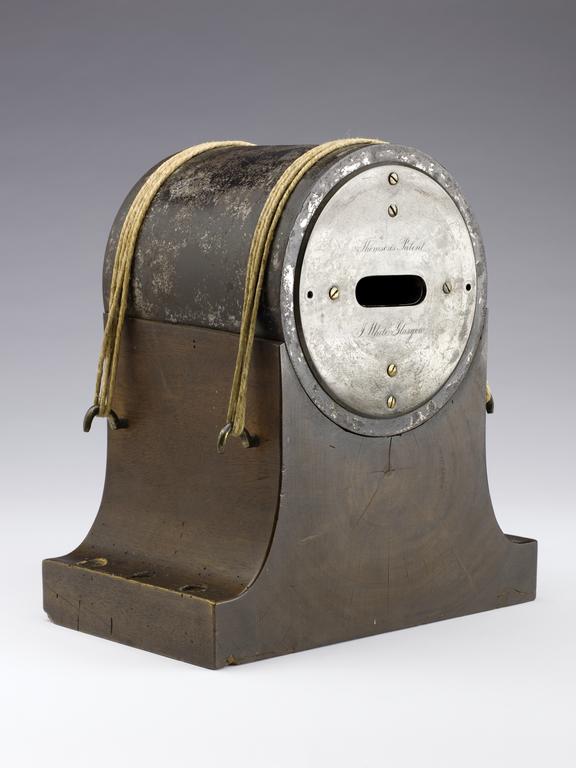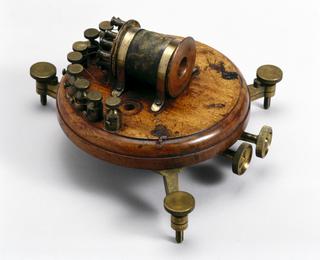
Lord Kelvin's 'ironclad' marine galvanometer, 1865-1866

(Lord Kelvin) Thomson's 'Ironclad' marine galvanometer, made by James White, Glasgow, Scotland, 1865-1866. Used on board the 'Great Eastern' in the Atlantic Cable expedition of 1866.
A galvanometer is an instrument used to detect electric currents. The mirror galvanometer was developed by William Thomson as a particularly sensitive instrument for detecting the extremely weak currents received on long submarine cables. This type is called an 'ironclad' galvanometer due to the fact that it was encased in iron. This was to prevent the magnets within being affected by external magnetic forces that ships might encounter. It was used during the laying of the first successful transatlantic cable in 1866, aboard the Cable Ship 'Great Eastern'. It was used to pass messages through the cable as it was being laid, to ensure that it was still working, and to receive messages from the shore in Ireland.
Details
- Category:
- Electricity and Magnetism
- Object Number:
- 1876-40
- Materials:
- mahogany (wood), sisal, iron, brass (copper, zinc alloy) and paper (fibre product)
- Measurements:
-
overall: 275 mm x 253 mm x 154 mm, 20.5kg
- type:
- galvanometer
- credit:
- Donated by Sir William Thomson (Lord Kelvin)




